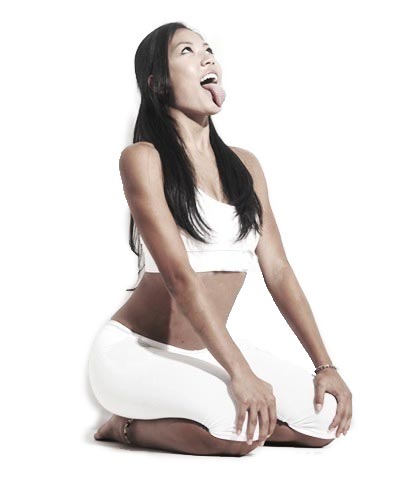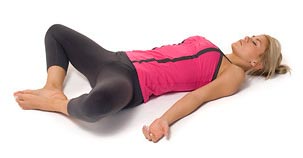Lion Pose, Simhasana: Yoga Facial Muscles Exercise with Anti-aging effects.
Simhasana – Lion Pose encourages us consciously to express the fierce side of ourselves! It activates the internal energy locks (bandhas) and clears the throat passage.
In Lion Pose the body and face are manipulated at once to invoke the force and intensity of a lion’s roar. In fact, this posture is thought to be one of the best face exercises you can get, helping the blood circulate in the face, stretching and firming the skin, reducing wrinkles and crows feet. People often overlook another benefit of Lion Pose: it stimulates the platysma, which is a thin, rectangular-shaped muscle in the front of throat. This exercise will keep the platysma strong as you age.
It’s also great fun, it’s expressive nature leaves you feeling happy and revived.
1. From a kneeling position, lean forward to lift the buttocks and cross your ankles. Have the left foot closest to the floor, with the toes of both feet pointing back. Drop the tailbone toward the floor and lengthen up through the spine.
2. Place the palms of your hands on the knees with the arms fully extended. Spread the fingers wide, fully energising the arms from the shoulders through to the fingertips. REMEMBER: don’t slouch as you do this.
3. Close your eyes and take a long slow inhalation. On the exhalation lean forward a little, open the jaw as wide as possible, and allow your tongue to roll out as far as it is able to reach. Aim to touch the chin. Roll your eyes back to gaze up at the third eye area which is between the eyebrows. At the same time as you exhale, make a roaring noise in the back of the throat. In fact, roar two of three times. Hold this position and breathe through your mouth.
Tips:
Gaze: Third eye
Counter Poses:
- Reclining Bound Angle Pose, Supta Baddha Konasana
- Corpse Pose, Savasana
Lighten:
- Have a folded blanket under the ankles
- Choose a simple kneeling position
Effect: Releasing, Reviving
Lion Pose, Simhasana Counter Poses
In yoga we use a counter pose in a sequence; For example, a twist follows a backbend to “neutralise” the spine, or a forward bend follows a backbend to help lengthen the spine and calm the nervous system.




